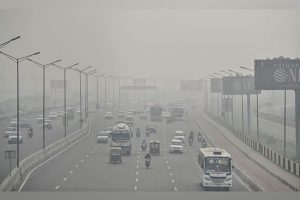Manual de-weeding of the iconic Dal and Nageen Lakes in Srinagar has been resumed but it is a herculean task before the administration of the J&K union territory (UT) to remove the widespread weeds and lily pads that have hidden many parts of these lakes.
Restoration of the pristine beauty of these lakes was on the top of agenda of the government when a former bureaucrat NN Vohra was governor of the state, but the successive governments took least interest towards cleaning of these waterbodies that are the main attraction of tourists in Srinagar.
Advertisement
Vohra closely supervised the works and personally visited the troublesome spots to accelerate de-weeding.
The job of beautification of these lakes was virtually forgotten since 5 August last year when curfew was clamped in the valley after abrogation of the Article 370 and splitting of the state into two UTs, J&K and Ladakh.
The government had few years ago acquired costly machinery for quick de-weeding of the lakes, but even then the desired results have not been achieved. The Dredging Corporation of India (DCI) that was assigned the job of removing the weeds, hyacinth and lily pads has reported that the world famous Dal Lake’s capacity has shrunk to about 40 percent and the water quality has deteriorated.
Pollution and encroachments have resulted in the Dal Lake shrinking to 10 kilometres from its original size of 22 square kilometres, according to an assessment of the DCI in 2017.
Besides weeds, hyacinth and lily pads, the raw sewage and solid waste flowing into the lake from the catchment areas and about 900 houseboats was causing extreme pollution in the water body that was quickly moving towards becoming a dead lake.
The Lakes and Waterways Development Authority (LAWDA) has now started manual de-weeding of Dal and Nageen Lakes but this might become an unending job if not accelerated with machinery.
The de-weeding is being done in 34 sections along the 16 km stretch from Dalgate to Nageen upto 60 metres from the lake periphery. Beyond 60 metres, de-weeding by machines is being conducted, said an official spokesman on Sunday.
Target of removal of about 75,000 cubic meters of weed has to be achieved manually upto November this year. A total number of 4030 men have been engaged for the job since mid-May.
Removal of lily pads on five sections spread over an area 1.34 Sq km from front side of Doledemb has been started out of the total target of 2.75 Sq km. However, the massive wild re-growth in the rising atmospheric temperature was posing a challenge before the authorities.
Following concerns over deteriorating water quality and shrinking of size of the lake, the government had recently set up a ten-member committee to declare the famous Dal Lake and its surrounding areas as an eco-sensitive zone (ESZ).
The depth of the lake has also reduced considerably at many places due to continuing discharge of night soil from the house boats and adjoining areas.











